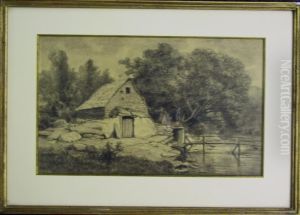Eugene Lacomble Paintings
Eugène Lacomblé was a 19th-century Belgian sculptor known for his classical and mythological figures, as well as his busts of historical personages. Born in Ghent, Belgium, in 1826, Lacomblé was active during a period when European art was dominated by academic and neoclassical styles. He received his artistic training at the Royal Academy of Fine Arts in Ghent, where he honed his skills in sculpture and developed a strong foundation in the classical arts.
Throughout his career, Lacomblé participated in numerous exhibitions and earned recognition for his work. His sculptures often featured allegorical subjects, and he was skilled at capturing the human form with a sense of grace and idealism characteristic of neoclassical sculpture. Lacomblé's works were influenced by ancient Greek and Roman art, as well as by the Renaissance, and he strived to achieve the balance and proportion found in these earlier periods.
Lacomblé's sculptures can be found in public spaces and museums, and they often reflect the tastes and interests of the Belgian bourgeoisie of the time. He created memorials and public monuments, contributing to the cultural landscape of Belgium. His pieces are notable for their meticulous attention to detail and their expressive qualities, which convey the emotions and narratives of the subjects he depicted.
Eugène Lacomblé's contributions to Belgian art were significant during his lifetime, and his works continue to be appreciated for their craftsmanship and artistic value. He passed away in 1906, leaving behind a legacy of work that exemplifies the neoclassical tradition in Belgian sculpture during the 19th century.
